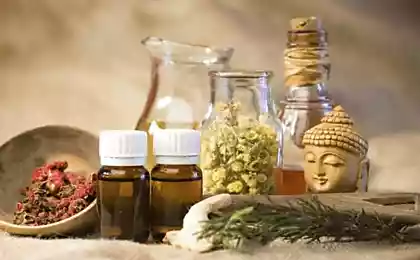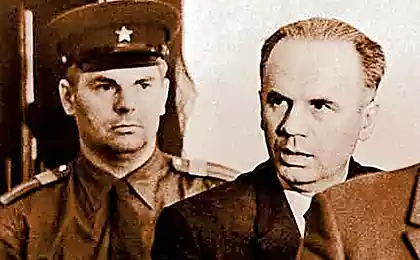185
The secret of Soviet drinks from shared glasses in soda machines
Soda machine In the USSR, it was the object before which impressive queues were lined up. And although all thirsty had to drink from one glass, but no one was particularly embarrassed. And for some reason no one thought about any bacilli.
Today's edition. "Site" It suggests remembering how these devices functioned, and whether the soda was really tasty. Why didn’t you worry about drinking from a faceted glass that hundreds and thousands of people used before you?
553282
These machines have become a real symbol of the era. The demand for soda was huge, so the machines themselves were put everywhere: at train stations, in cinemas, in hotels, in shops, and just on the streets. Even after many decades, people remember how much soda cost and how it tasted.
Note that the spread of soda machines was very rapid. First they flooded Moscow, and soon the whole USSR. Their working principle was not complicated.
Inside were containers with syrups, a metering liquid distributor, a saturator (a device that saturates water with carbon dioxide) and a water cooling mechanism. The gas pressure was regulated by a special relay.

Surely many readers remember that a glass of ordinary carbonated water cost one penny. And if a person wanted water with a syrup of “cream soda”, “barberry”, “bell”, “tarhuna” or some other, then he had to pay three pennies.
Interestingly, some craftsmen invested three pennies, received a portion of sweet syrup, then removed the glass, invested three more pennies and filled the glass with another serving of soda syrup. Thus, for 6 kopecks, they received a drink with a double serving of syrup.

There were some incidents. For example, the syrup could suddenly end and a person for his 3 cents received only a glass of soda. Although we note that in some institutions, in scientific institutes and workshops of plants, soda machines worked for free. And where there were “harmful” production, the machines also offered soda with salt. It was believed that this drink helps to stay in good shape for longer.

To wash the glass, the machine had a separate nest. You turn the glass over, you put it in this nest, you press it, and the container is washed from the inside by a fountain of water. I think it's all thought out. However, the water fountain was so weak that the glass remained dirty. Often there were even traces of lipstick on the glass (and sometimes not alone).
Of course, the machines from time to time served, washed. But it didn't happen every day. And therefore dirty glasses could well be the source of the spread of all sorts of pathogenic bacteria.
Although with SARS, flu or something similar, few people were interested in how a person “caught it”. Official statistics were not available at all.

Some people still understood the dangers of reusable faceted glasses. They either carried their own glass or simply avoided soda machines. They also banned children from buying unsafe soda. Unsanitary conditions were not the decisive cause of the collapse.
Despite growing fears, automatic rifles continued to be in demand until the collapse of the USSR. Then the maintenance of the devices ceased, which put an end to their existence. And soon there was an opportunity to buy soda in bottles in any stall.

Rising inflation also played a role, with prices having to be updated every couple of months. And regularly reworking complex coin acceptors was simply economically impractical occupation. Therefore, soda machines, which could not withstand the challenges of modern times, are simply a thing of the past. Many people still remember them today.
Do you remember?
Today's edition. "Site" It suggests remembering how these devices functioned, and whether the soda was really tasty. Why didn’t you worry about drinking from a faceted glass that hundreds and thousands of people used before you?
553282
These machines have become a real symbol of the era. The demand for soda was huge, so the machines themselves were put everywhere: at train stations, in cinemas, in hotels, in shops, and just on the streets. Even after many decades, people remember how much soda cost and how it tasted.
Note that the spread of soda machines was very rapid. First they flooded Moscow, and soon the whole USSR. Their working principle was not complicated.
Inside were containers with syrups, a metering liquid distributor, a saturator (a device that saturates water with carbon dioxide) and a water cooling mechanism. The gas pressure was regulated by a special relay.

Surely many readers remember that a glass of ordinary carbonated water cost one penny. And if a person wanted water with a syrup of “cream soda”, “barberry”, “bell”, “tarhuna” or some other, then he had to pay three pennies.
Interestingly, some craftsmen invested three pennies, received a portion of sweet syrup, then removed the glass, invested three more pennies and filled the glass with another serving of soda syrup. Thus, for 6 kopecks, they received a drink with a double serving of syrup.

There were some incidents. For example, the syrup could suddenly end and a person for his 3 cents received only a glass of soda. Although we note that in some institutions, in scientific institutes and workshops of plants, soda machines worked for free. And where there were “harmful” production, the machines also offered soda with salt. It was believed that this drink helps to stay in good shape for longer.

To wash the glass, the machine had a separate nest. You turn the glass over, you put it in this nest, you press it, and the container is washed from the inside by a fountain of water. I think it's all thought out. However, the water fountain was so weak that the glass remained dirty. Often there were even traces of lipstick on the glass (and sometimes not alone).
Of course, the machines from time to time served, washed. But it didn't happen every day. And therefore dirty glasses could well be the source of the spread of all sorts of pathogenic bacteria.
Although with SARS, flu or something similar, few people were interested in how a person “caught it”. Official statistics were not available at all.

Some people still understood the dangers of reusable faceted glasses. They either carried their own glass or simply avoided soda machines. They also banned children from buying unsafe soda. Unsanitary conditions were not the decisive cause of the collapse.
Despite growing fears, automatic rifles continued to be in demand until the collapse of the USSR. Then the maintenance of the devices ceased, which put an end to their existence. And soon there was an opportunity to buy soda in bottles in any stall.

Rising inflation also played a role, with prices having to be updated every couple of months. And regularly reworking complex coin acceptors was simply economically impractical occupation. Therefore, soda machines, which could not withstand the challenges of modern times, are simply a thing of the past. Many people still remember them today.
Do you remember?
The war in Ukraine breaks the heart of Milla Jovovich
What the audience admires Oleg Valerianovich Basilashvili























